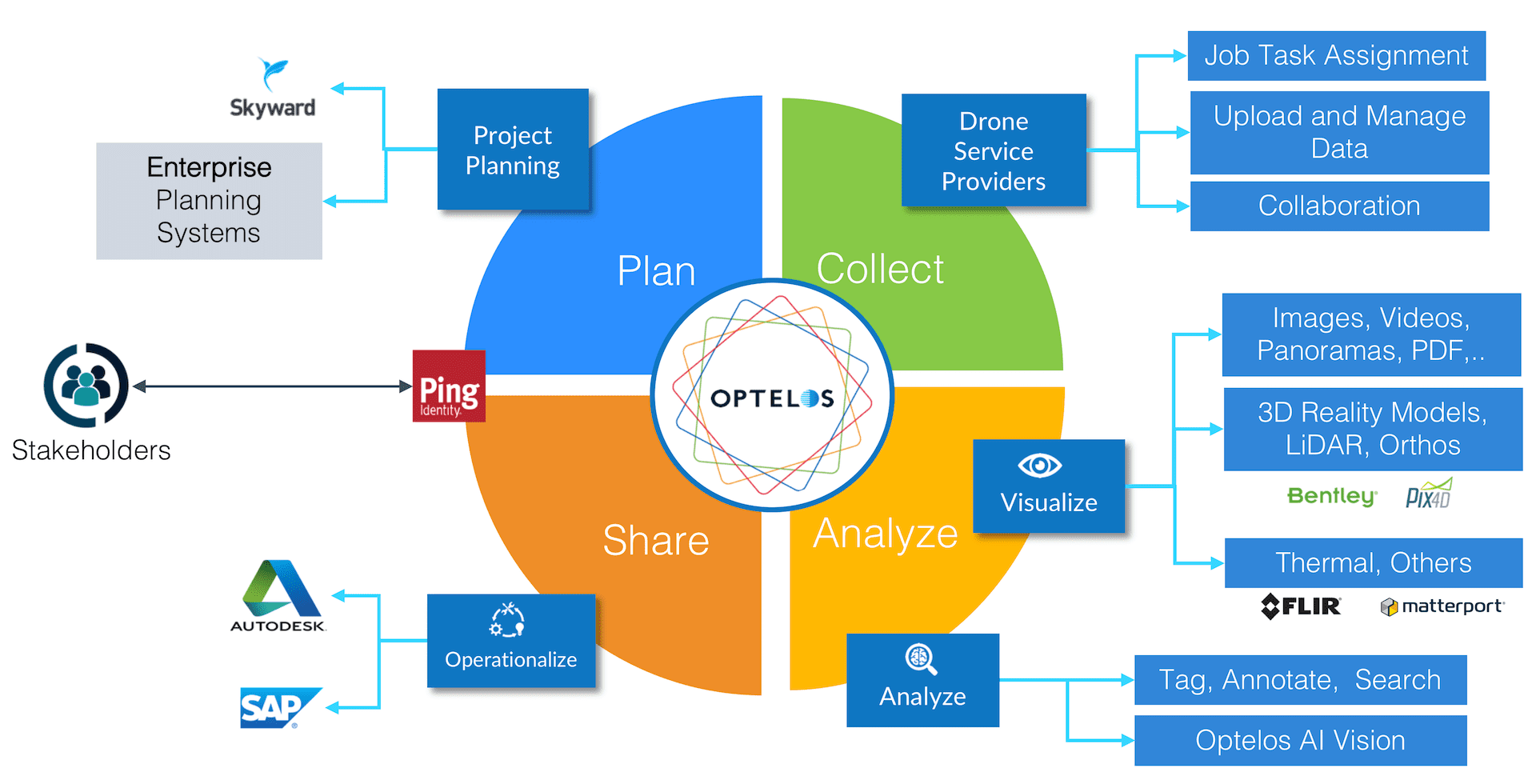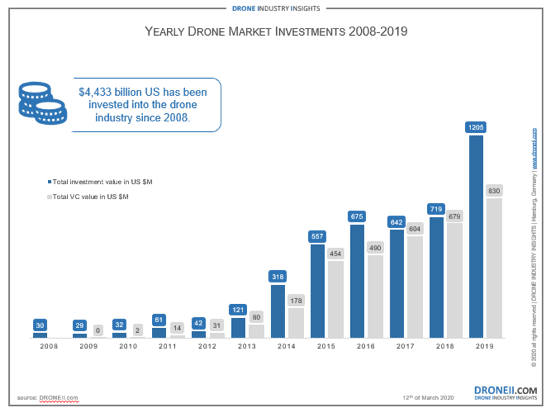Choosing Best in Class Solutions for Asset Inspections
Over the past few years the use of drone-based inspections have become an important tool for Enterprises to collect imagery and videos for the inspection, monitoring, and maintenance of assets. In fact over $2.5B has been invested in the drone industry since 2017. This enabled the acceleration of digital transformation of asset inspection from manual inspections to the use of new technology tools, such as robots, IoT sensors, UAV and specialized cameras that can detect thermal, vegetation, gasses and electricity discharges.
Enterprises are clearly realizing the benefits from the use of these new technologies, but this created a new, unanticipated problem that needed to be solved before the transformation to these new technologies could be truly realized.
The problem was the volume and complexity of visual data now available to these businesses. Previously, a human, using their own vision, inspected the asset, made notes, and recorded their findings in either spreadsheets or shared folders, like Dropbox. This manual process resulted in significant delays in managing, analyzing, and delivery insights from all this data. Enterprises clearly needed a more robust, standardized solution to manage this unstructured content, enable the annotations and tagging of this data, and allow stakeholder to share and coordinate activities that correlated to the inspection data. This became a new and growing challenge for these businesses.
Initially Enterprises turned to their drone service providers, the companies who were flying the drones, operating the robots and collecting the data. Understandably the drone service providers wanted to help their customers provide a way to correlate, organize, annotate and share the data. Providing this type of solution also served the drone service providers objectives as it required the enterprise to use the drone service providers proprietary solution to access, visualize and share the data.
However, Enterprises began to realize several issues with trying to rely on drone service providers to deliver software:
- First, providing best of class data management, data visualization, and analytics software is not the core business and expertise of the drone service providers.
- Since these providers are motivated to retain their flight services, they offer a proprietary software solution meaning that the Enterprises are “locked” into the service providers. This means their valuable and confidential data was controlled by a single service provider making it very difficult to scale.
- Additionally, relying on a single service provider meant that Enterprises did not have the flexibility to use multiple providers or eventually bringing the drone inspections in-house due to the proprietary nature of the service provider’s software.
In 2018-2019, after years of test and learn, enterprises concluded that the use of drone and robots was a high quality, cost effective, and safe way to gather required data on their assets. The ROI started to come together as they now understood the benefits these technologies and solutions provided. As a result, many enterprises moved to develop and launch their own internal drone inspection program. This transition to an enterprise managed UAV program provides many benefits:
- It enables a best of breed approach to utilize both external drone service providers as well as increasingly training and certifying their own employees to perform inspections. This allows Enterprises to effectively control, manage, and scale their program to best align with business needs.
- Enterprises can select external drone service providers to provide specialized services that may require specific equipment and payloads or regulatory waivers.
- Implementing standardized visual data management, data visualization, and AI based inspection analytics from best of breed software vendors such as Optelos. This enabled Enterprises to utilize an open platform to manage, visualize, share, and act on data regardless of who performs the inspection service.
As an example, one of Optelos’ customers, a large industrial manufacturing provider with over 170 locations in the US, decided to do just that. In early 2019, they moved from using external drone providers to an internal operation led by their own asset inspection teams. They selected Optelos to provide a standardized platform across their entire organization to plan, collect, analyze, and share inspection data at scale.

Making this move gave them more control over the timing, costs and process of inspections, while ensuring more control over the safety of the operation in and on their facilities. This enabled them to utilize best of breed flight planning software such as Skyward, 3D model generation from Bentley, and integration with their SSO solution all through a single platform. In addition, Optelos enabled them to store their data on their own managed cloud storage system giving them complete control and access to their data via the Optelos Data APIs. Their use of Optelos was an important part of the decision to move the inspections in-house.
Importantly, Optelos is not a drone service provider which allows us to focus on what we do best; providing innovative, patented visual data management and AI computer vision software enabling Enterprises as they accelerate the digital transformation of their asset inspection program. Because of our position, we are able to work with several high quality, global UAV inspection providers, giving us the unique ability to build and offer software solutions that are not only best in class, they also allow for maximum flexibility to use any drone service provider they choose or their own internal operations.
It’s critically important for enterprises to maintain control over their asset inspection data. Being beholden to a provider whose core business is flying drones, doesn’t allow for best in class software solutions for their business, allowing them to ultimately scale the inspection process to include the use of Artificial Computer Vision, further improving the speed, quality and safety in the inspection process.
